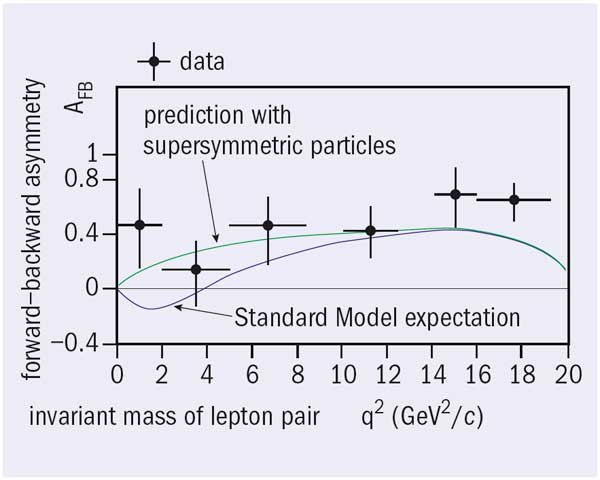
The Belle collaboration at KEK has recently analysed the angular distribution of leptons in the decays of B mesons into a K* meson and a lepton anti-lepton pair, where the lepton is an electron or a muon. The team finds that the results, which were presented in August at the Lepton–Photon International Symposium in Hamburg, are larger than expected from the Standard Model.
The figure shows the forward–backward asymmetry of the positively charged lepton with respect to the direction of the K* in B → K*l+l–, based on the analysis of 660 million pairs of B and anti-B mesons. The measured data points are above the Standard Model expectation (solid curve). In the Standard Model this decay mode proceeds via a “Penguin diagram” involving intermediate virtual particles, such as a Z boson or a W boson, which are much heavier than the B meson. New heavy particles beyond those already known in the Standard Model should also participate in a similar way. The difference between the measurements and the Standard Model expectation (blue curve) might indicate that such new particles are indeed produced in addition to Z and W bosons. Indeed, the data points are closer to the prediction that includes supersymmetric particles (green curve).
This rare decay process was discovered by Belle in 2002. However, the measurement of the lepton forward–backward asymmetry has been quite difficult owing to the small decay rates. It has become possible only with increased data samples that the experiment has gathered, thanks to the improved performance of the KEKB accelerator. The analysis so far has yielded about 250 signal events. To clarify whether the results are indeed hinting at new physics, the Belle collaboration is continuing its measurements with a larger sample of accumulated data.








